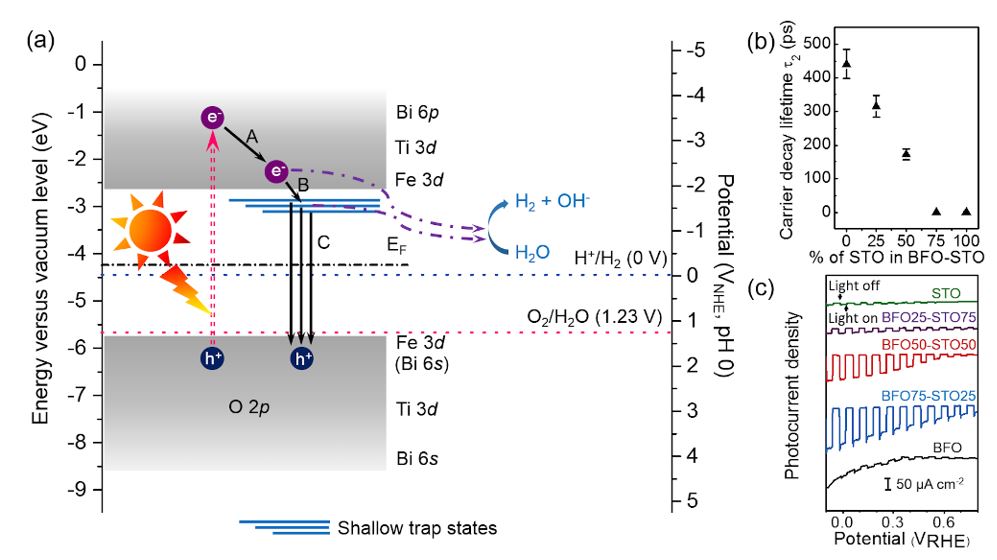Converting solar energy into chemical energy by photoelectrochemical (PEC) water splitting is a promising approach for sustainable energy production. Owing to the versatility in their chemical and physical properties, transition metal perovskite oxides have emerged as a new category of highly efficient photocatalysts for (PEC) water splitting. To overcome the limitations of single-component perovskite oxide photocatalysts, solid solutions consisting of two different perovskite materials have been actively investigated. Here, to understand the underlying mechanism for the enhanced PEC water splitting in mixed perovskites, we explored ideal epitaxial thin films of the BiFeO3-SrTiO3 (BFO-STO) solid solution. We determined that the conduction band minimum position is raised and an exponential tail of trap states from the hybridized Ti 3d and Fe 3d orbitals emerges near the conduction band edge when STO is added to BFO. The presence of these trap states strongly suppresses the fast electron-hole recombination, increases the carrier lifetime, and improves the photocurrent density in the visible-light region.
Figure: (a) Schematic diagram of band positions relative to the vacuum level and NHE for the BFO50-STO50 film. A, B, and C represent the photo-excited carrier relaxation and recombination processes. (b) The dependence of carrier decay lifetime τ2 as a function of STO composition. (c) Polarization curves of BFO, BFO75-STO25, BFO50-STO50, BFO25-STO75, and STO films.
W. Li, K. Jiang, Z. Li, S. Gong, R. L. Z. Hoye, Z. Hu, Y. Song, C. Tian, J. Kim, K. H. L. Zhang, S. Cho, and J. L. MacManus-Driscoll, “Origin of Improved Photoelectrochemical Water Splitting in Mixed Perovskite Oxides”, Advanced Energy Materials (2018) 1801972

